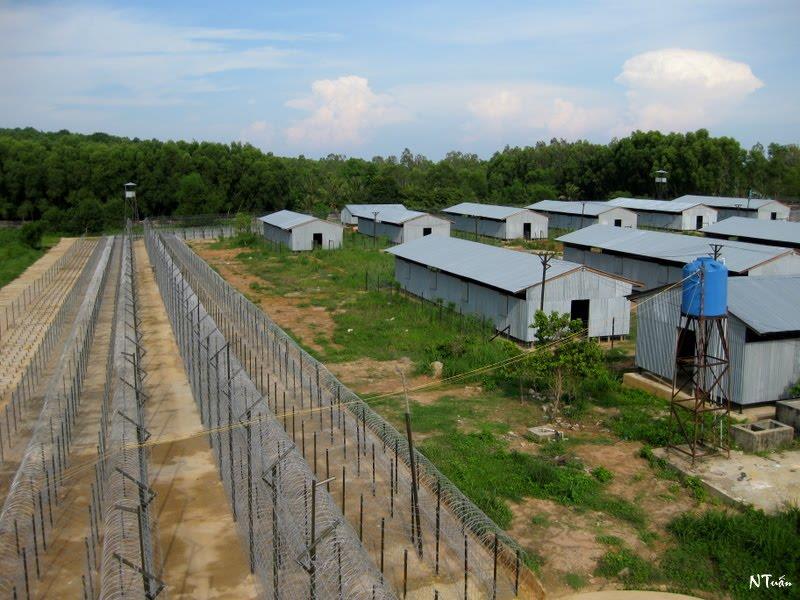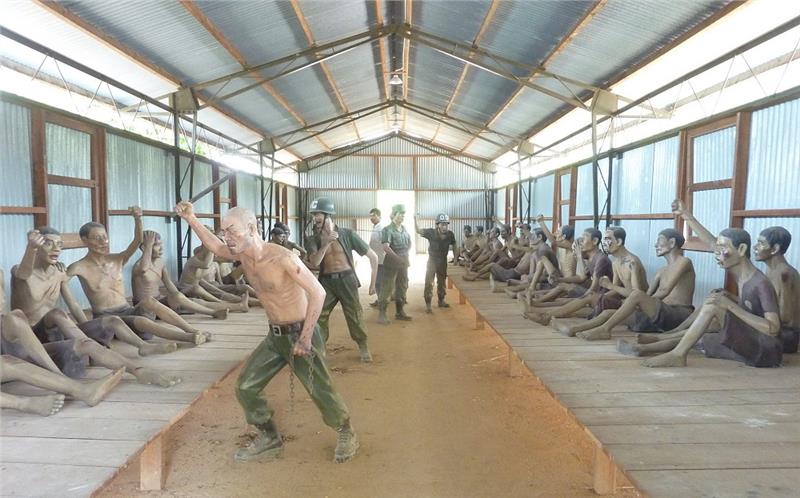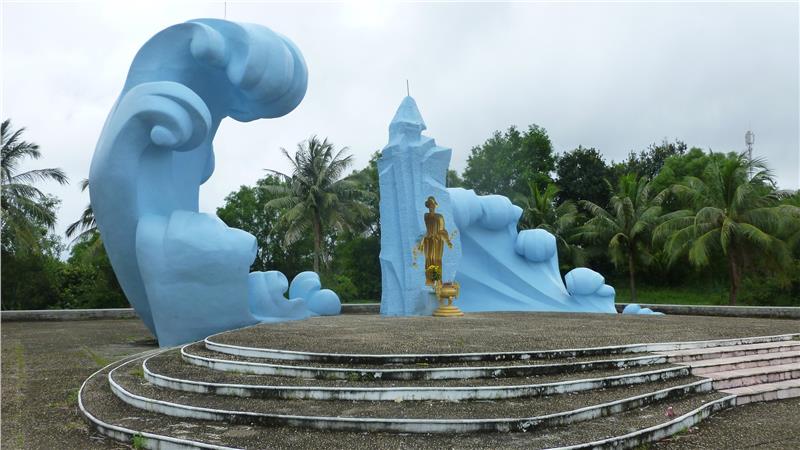Phu Quoc Prison is a prison jailing communists in the An Thoi Town, in the south of Phu Quoc Island. In the period of Indochina War, the prison was also commonly known as the Coconut Tree Prison. This is the central prison of the Republic of Vietnam. Once, it detained more than 32,000 prisoners (40,000 prisoners including political prisoners for many periods). During the period of resistance wars against the French and American, hundreds of prisoners were jailed and tortured brutally and barbarically.

This prison was built in the French colonial period, in Coconut Tree Village, so they called the prison Coconut Tree Prison. In the period of the Republic of Vietnam, this prison was expanded to become the largest contemporary prison with names as Phu Quoc Prisoners Of War Camp (Phu Quoc POW Camp), or Phu Quoc Communist Prisoners Camp.
The historical site today is located in the main area of the old jail in which there is a two-storey house of artifacts and an outdoor exhibition area of original artifacts. The Coconut Tree Prison was recognized as a national historical site in 1995, since then, this site is open for visitors. The prison is mentioned a lots in Vietnamese literature through the history book written by Chu Lai.

In the period of French occupation, the Coconut Tree Prison covered an area of about 40 hectares, including four zones A, B, C, D which were used to detain people who fought against the French. The camp was officially put into operation in June 1953, and closed in July 1954 (when prisoners of two sides were returned).
Phu Quoc Prison has 12 zones numbered from 1 to 12 jailed by three military police battalions (7, 8, and 12). The 13 and 14 zones were built at the end of 1972. Each zone could occupy about 3000 prisoners, and divided into many sub-zones. Each sub-zone can accommodate about 950 prisoners. B2, in particular, was used to detained officers. In addition, each zone is surrounded by 10-15 hard layers of barbed wire with dense electric lighting system. Besides the system of jailers, there were four battalions equipped weapons and mobile media, to guard and patrol all day in "rush periods". In addition, there was a regular navy battalion patrolling the outer of the prison (sea area). The guarding force was so dense with 2 prisoners per jailer. The repressive apparatus reached up to 4,000 people including navy, infantry, and air forces. With this apparatus, the enemy believed that the oppression could beat any external forces.

During Vietnam War, prisoners in this camp had to suffer many barbaric and brutal tortures such as nailed into hands, foot, and head; stabbed with a burning wire, carved teeth, boiled, burned and buried alive... In the period of nearly 6 year (from June 1976 to March 1973), Phu Quoc Prison witnessed over 4,000 deaths, tens of thousands of wounded and disable people.
In 1995, the Phu Quoc historical site was recognized as the national relic. In Phu Quoc Prison, the hand-shaped monument is the symbol of fierce oppression and brave spirit of prisoners. Besides, martyrs cemetery, and the area of Phu Quoc POW Camp were reconstructed and maintained. Annually, over 10 thousand of visitors come to this historical site in Phu Quoc. Many of them are former inmates coming here to revisit the old jail. Many young visitors from everywhere do not forget to drop by this site after visiting famous attractions in Phu Quoc. Nowadays, there are more and more foreigners coming to the special historical site. Many students in this island often pop in here to learn about a lively Phu Quoc and a courteous history of ethnic struggle.

Coming to the jail, one of top things to see in Phu Quoc, you will have a chance to see all terrible and brutal punishments and tortures by your naked eyes. The more you witness, the more can you understand the bravery of prisoners to the enemy. The image of torturing by nailing into prisoners' body, jailing them in Tiger Cages in sunny days will recall a fierce jailing period in this prison. Visiting this prison, you will known more about the patriotism of Vietnamese people. Visiting this camp is one of top things to do in Phu Quoc.
